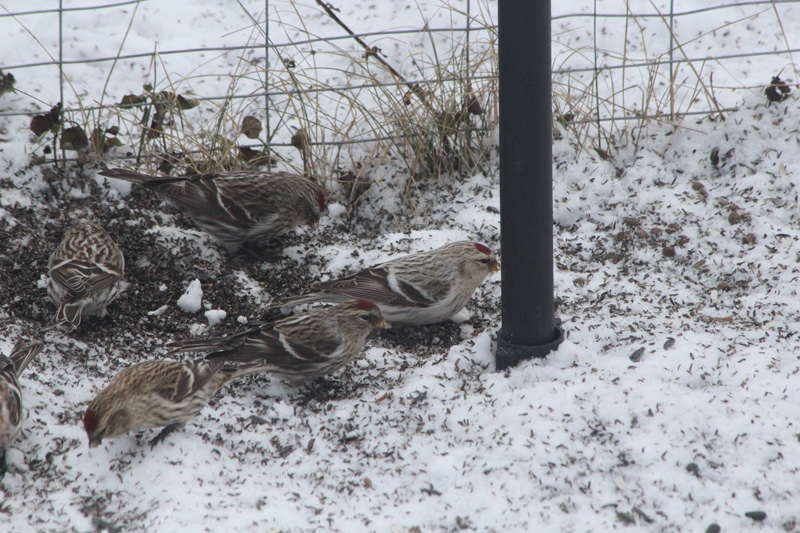By Matthew A. Young:
One of the things we, the Finch Research Network (FiRN), plan to do for the birding and ornithological communities, is to help with tough finch identifications, and there’s perhaps no tougher species group than the redpolls. Again, we’re super excited to have Alex Lamoreaux join the team at FiRN to help with identifications for such species as Hoary Redpoll, “green morph” Pine Siskin, and more.
Much of the below photo essay was written in March 2013 for Birding Frontiers but remains quite relevant whenever or wherever redpolls irrupt. It’s been updated, added to, and adapted for the Redpoll irruption 2020-21.
A fairly large wide-scale invasion of redpolls took place in 2012-13 and it’ll be interesting to see how this invasion 2020-21 matches it. What was unusual about the 2012-13 invasion was that it happened in both the eastern and western parts of the United States, which looks like might be happening this year too! Often invasions only occur in either the east or west, not both at once. By January of 2013, Colorado had seen more redpolls (both species) than they had seen in 25 years combined. In the northeastern United States, more Hoary (Arctic) and “Greater” (Northwestern subspecies islandica/rostrata) Common redpolls were being reported than usual.
The most familiar Common Redpoll (Acanthis flammea) subspecies across the circumpolar areas of the globe including North America and Eurasia is the “flammea.” subspecies. There’s also the “Greater” Common Redpoll, also known as the “rostrata” subspecies, which is endemic to Greenland. Meanwhile, many birders have heard of the pale Hoary Redpoll (Acanthis hornemanni), also known as the Arctic Redpoll, with the exilipes subspecies found in North America and Eurasia across the extreme Arctic and the hornemanni subspecies endemic to Greenland. For the ease of reading , I’ll refer to these birds as the “ssp. flammea Common Redpoll,” “the Greater Common Redpoll,” “Hornemann’s Hoary Redpoll,” and “ssp. exilipes Hoary Redpoll.” “Hornemann’s Hoary Redpoll and the Greater Common Redpoll are a good bit larger overall than most “ssp. exilipes Hoary Redpoll” or ssp. flammea Common Redpoll.
In the small upstate New York city of Cortland, I had the luxury of having redpolls visit my feeders starting mid-December. As any redpoll enthusiast will do, I started my usual painstaking examination of each and every bird. As most know, the variation found in the different redpoll subspecies can throw even the best of the best birders into a state of frustration. At first the variation found in the flock in my backyard was fair at best, but that all changed on Sunday 20th of January 2013 when a new flock appeared… and the variation was nothing like I had ever seen before.
This “new” flock had several very obvious Hoary type birds and a few Greater Common Redpoll type birds. But as I looked closer and closer, I realized there were some birds that were hard to ID… at least one bird seemed to be large and white enough for the Hornemann’s Hoary Redpoll… and another I kept looking at over the next 3+ weeks just didn’t seem to quite match that of any of the known North American subspecies. The rule with Redpolls is to take your TIME. Many are, but some are not an instant ID. They need to be seen and studied, mulled over and over again, photographed at as many angles possible, discussed, and then often, but not always, a clear identity will emerge.
Here are several photos of various birds seen in my yard or my neighbors yard (i.e. listed as Cortland, NY) and a few other pics from different areas of the northeastern United States to add additional context.
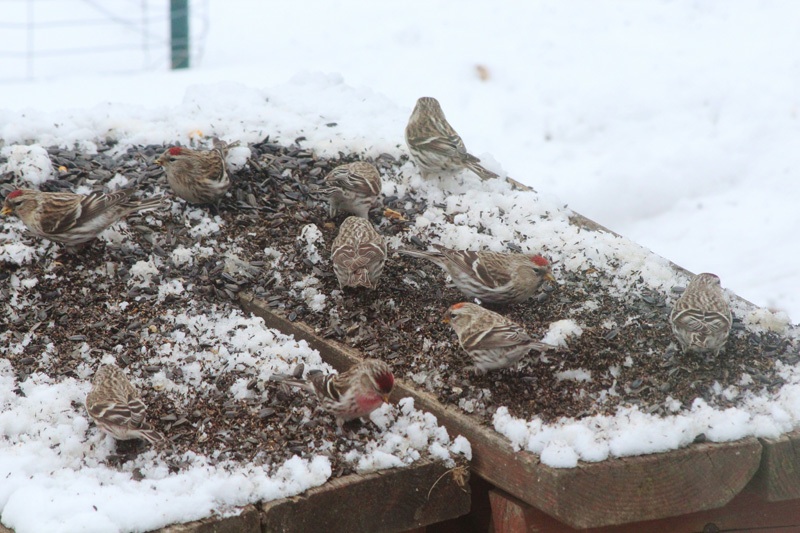
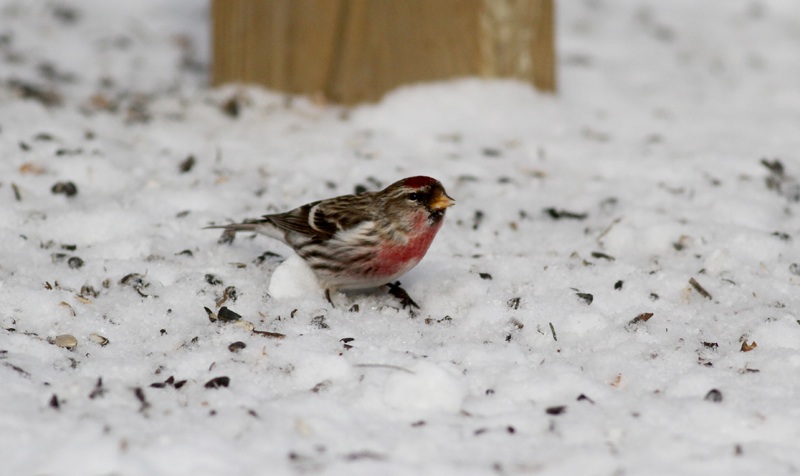

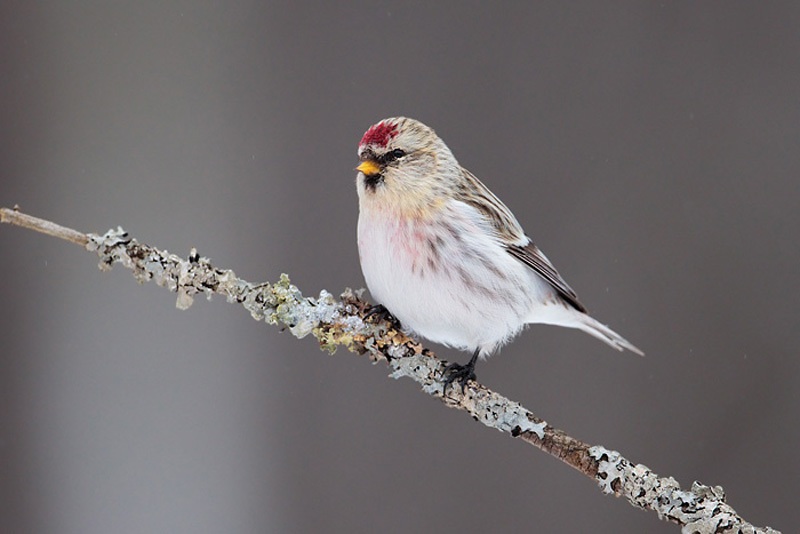
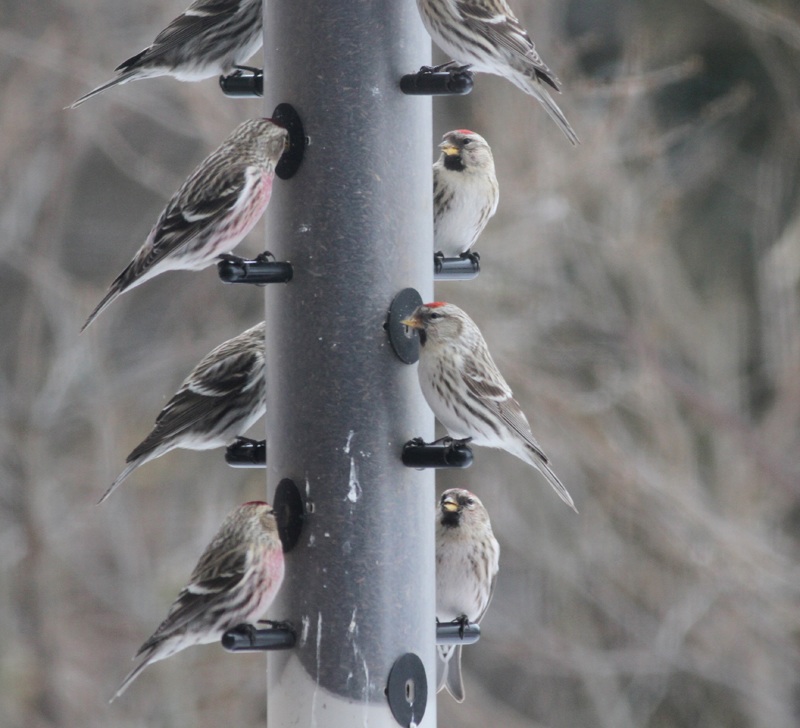

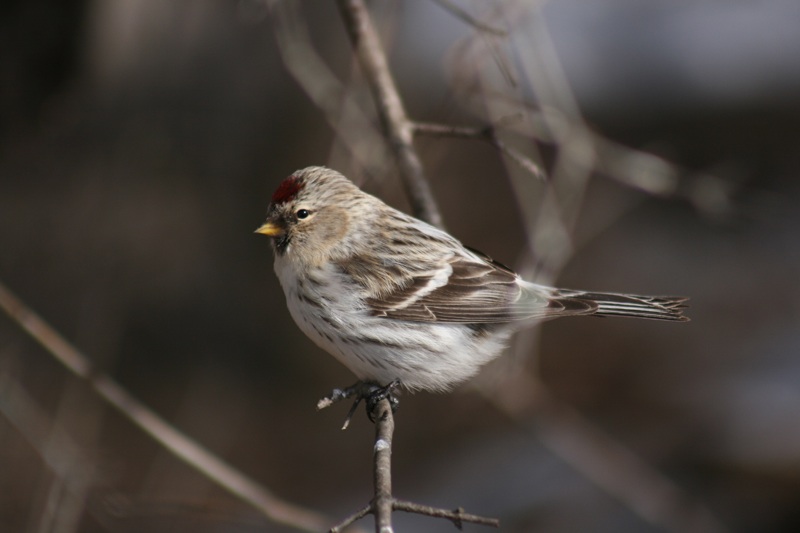
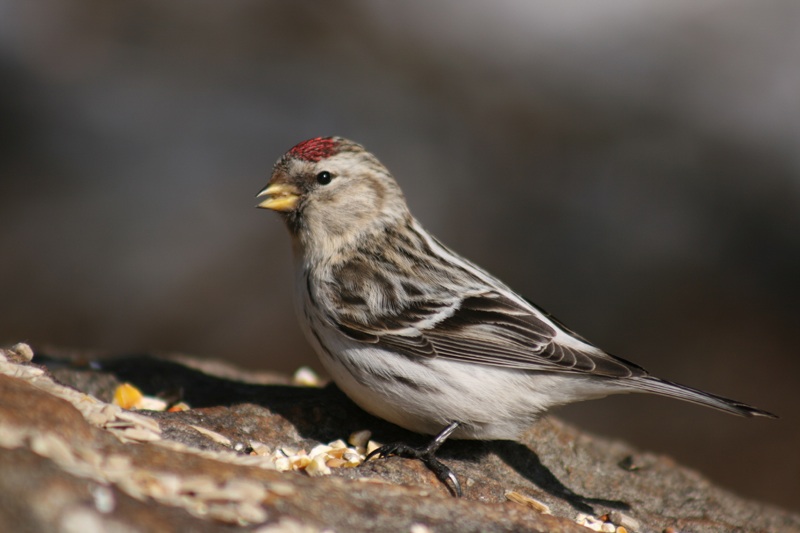
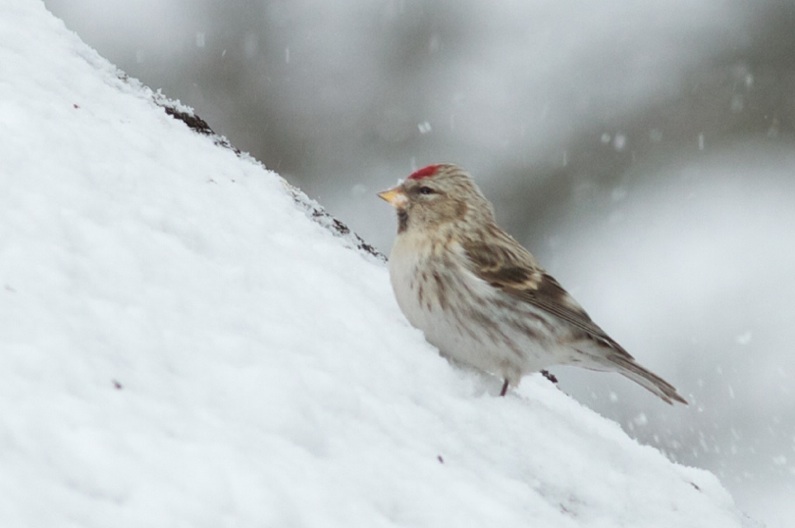
Tom Johnson Cortland, NY February 2013.
immature female ssp. exilipes Hoary Redpolls are the hardest to identify. See here for very likely immature female ssp. exilipes Hoary Redpolls in Macaulay Library: https://macaulaylibrary.org/asset/92968121 or https://macaulaylibrary.org/asset/181198861
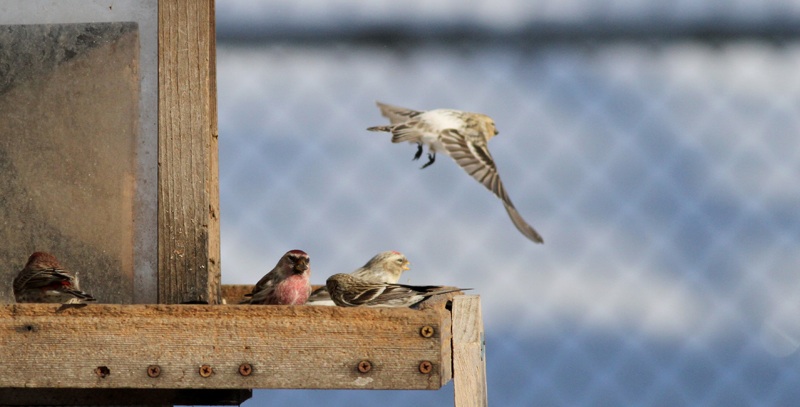

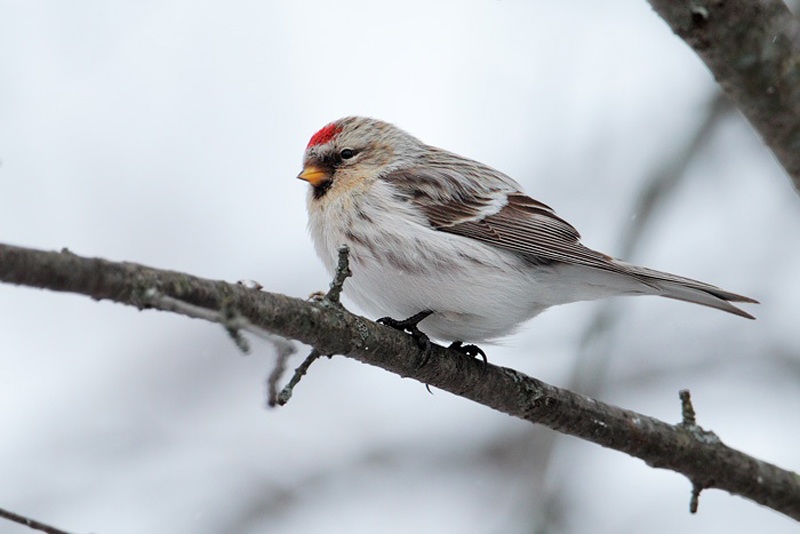
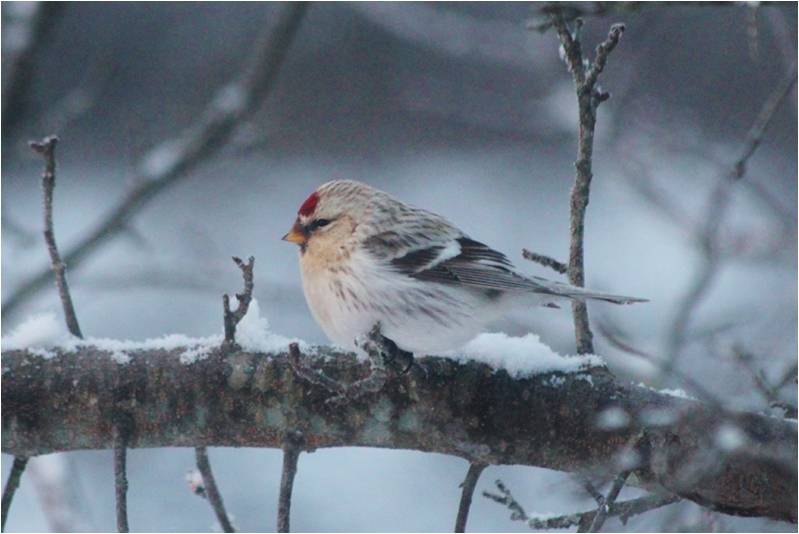

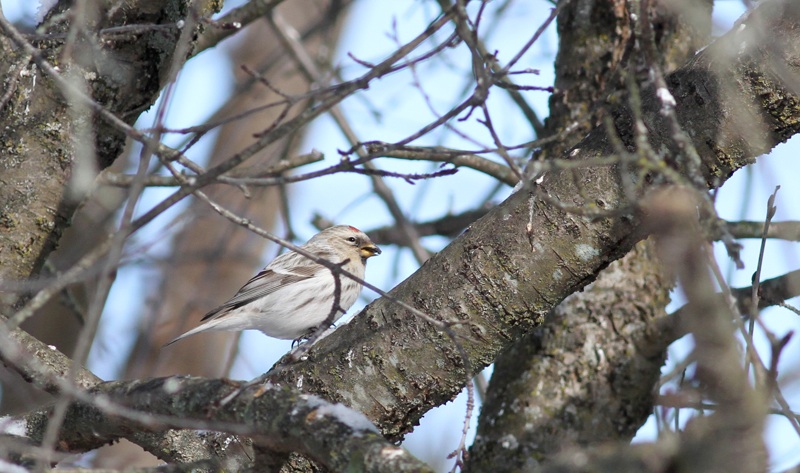

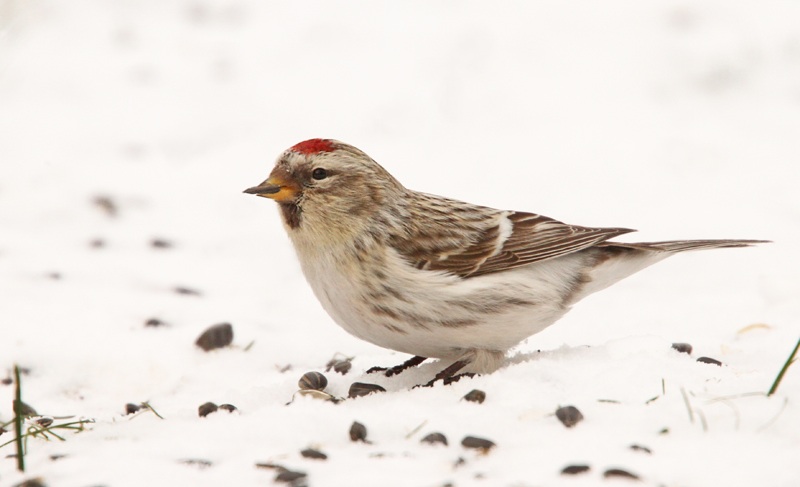

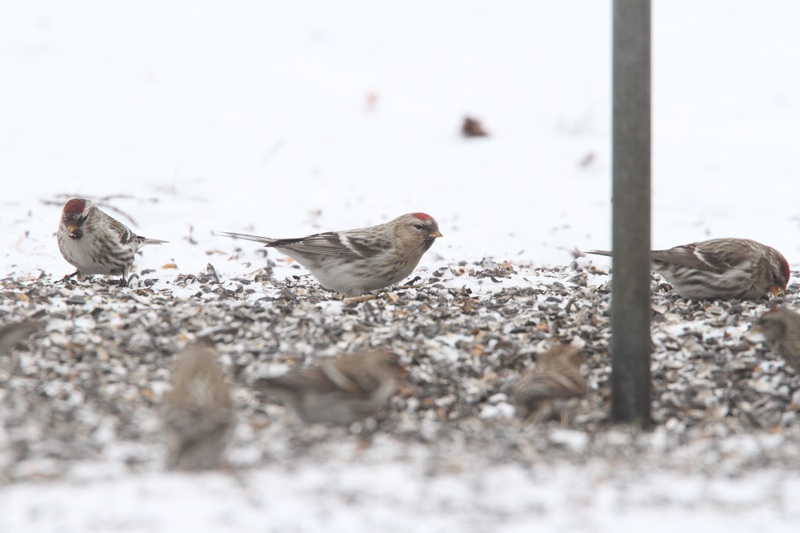
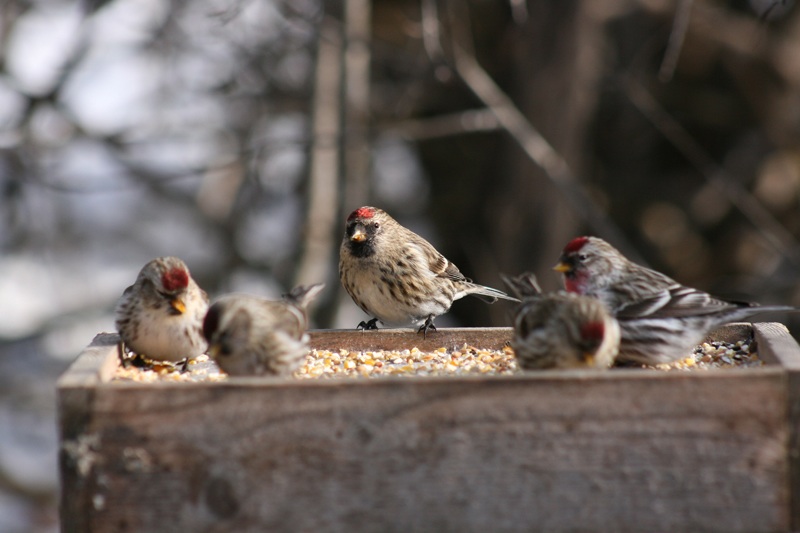
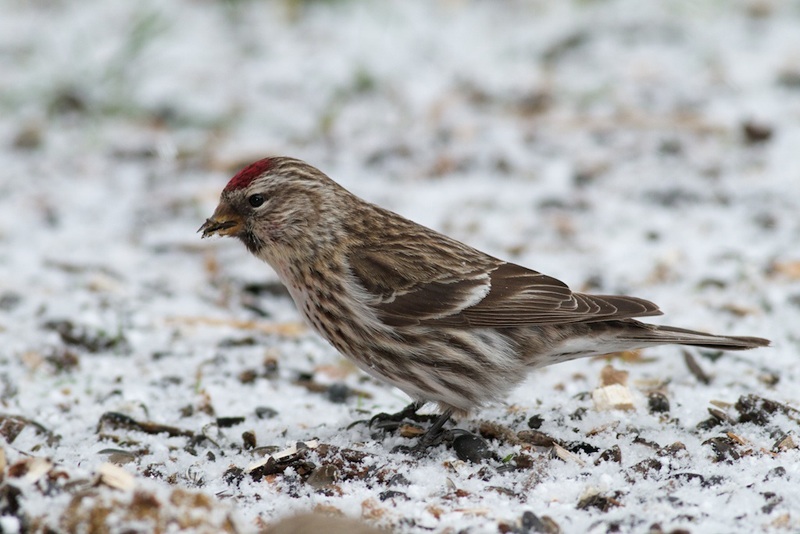
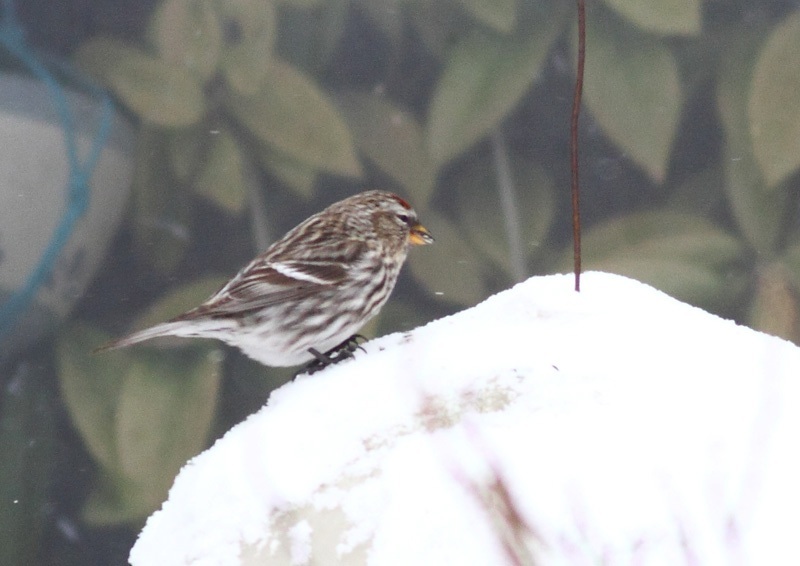
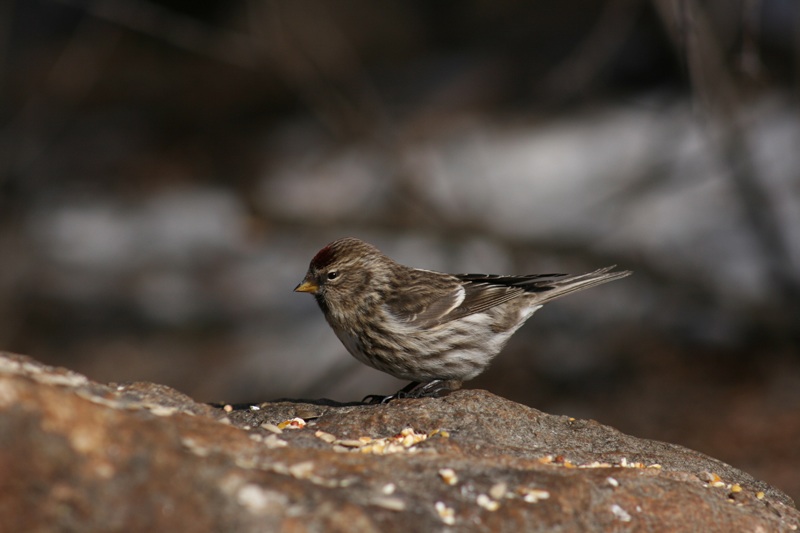
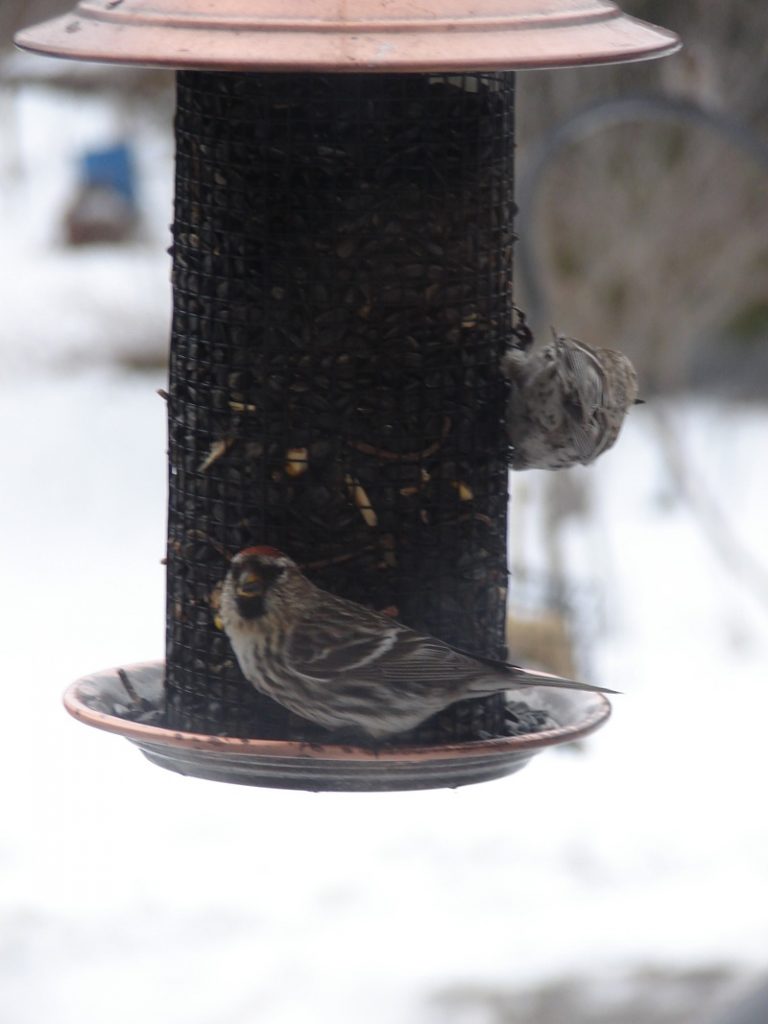
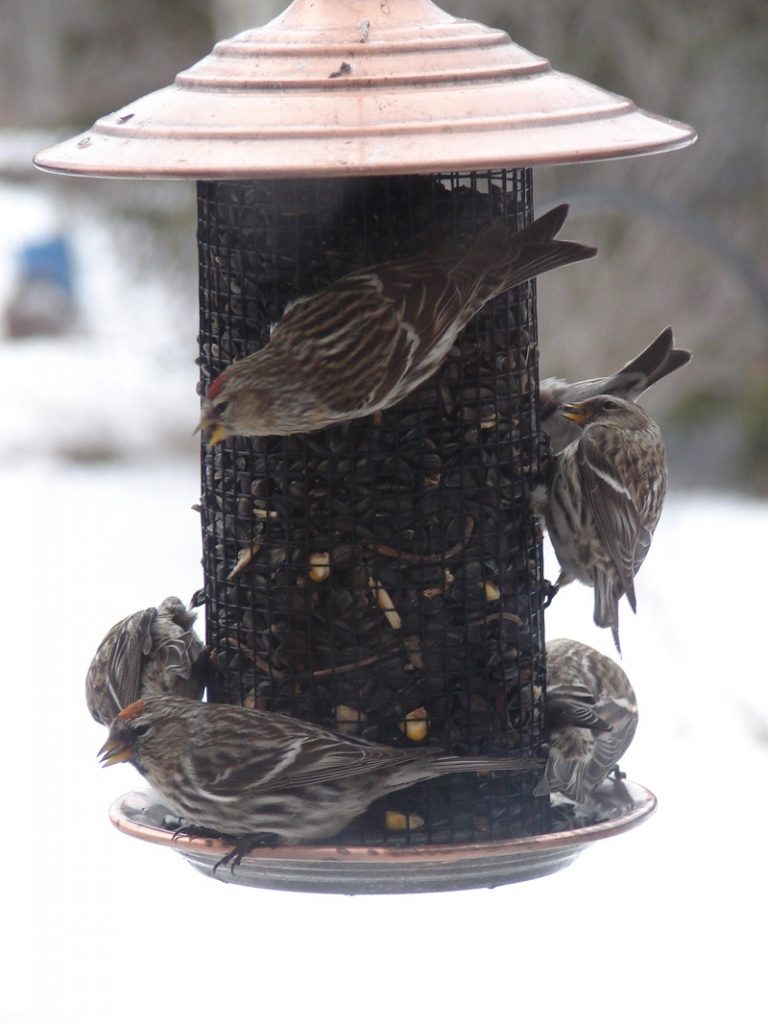
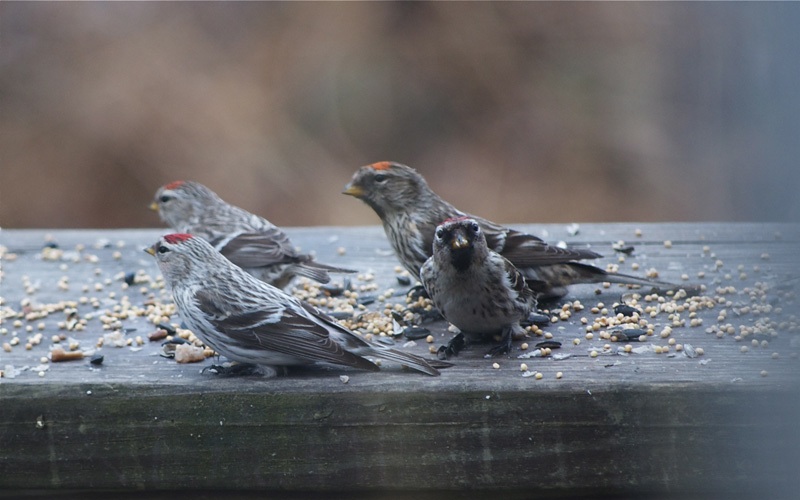
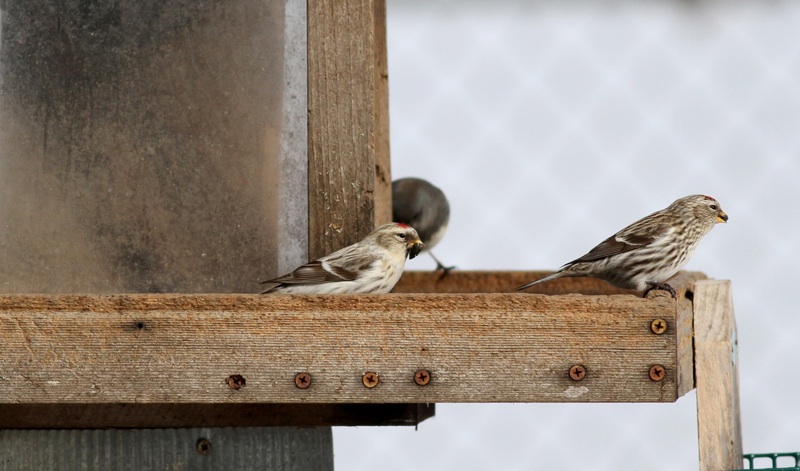
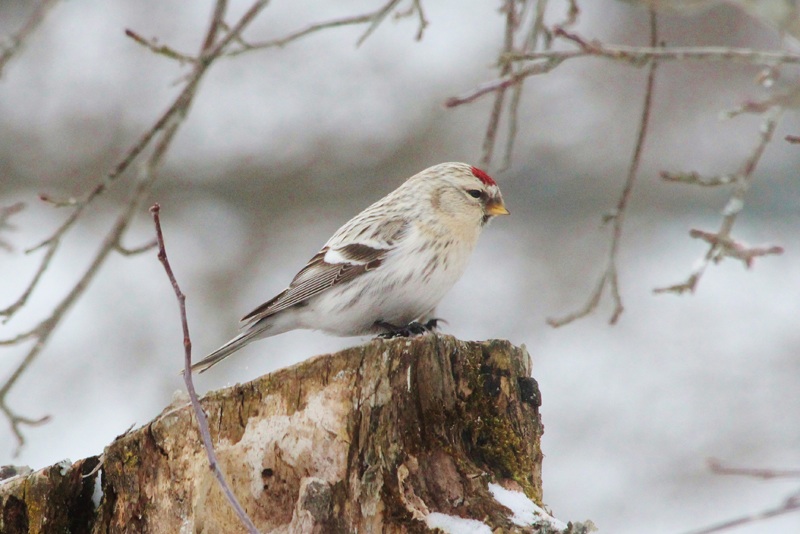
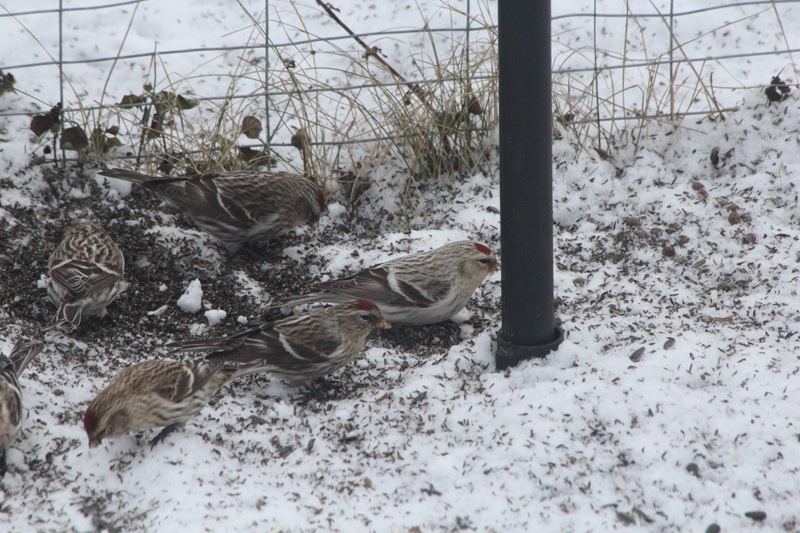
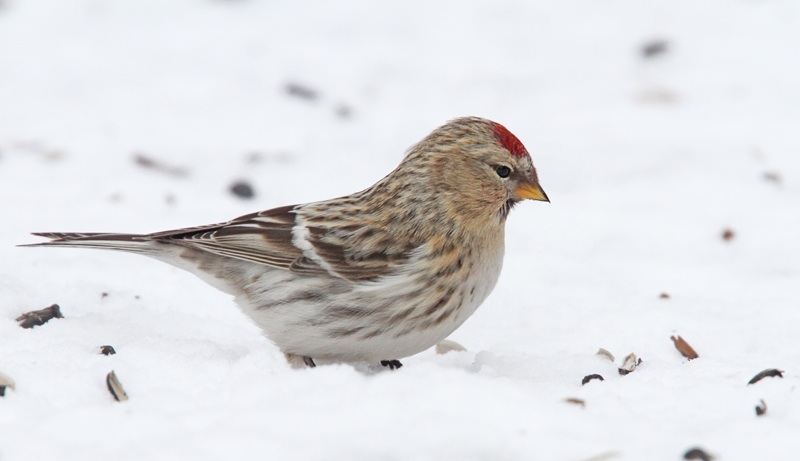
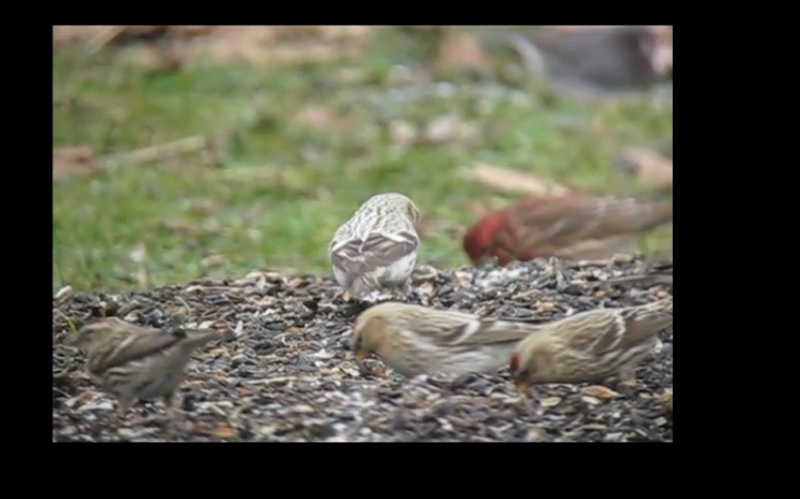
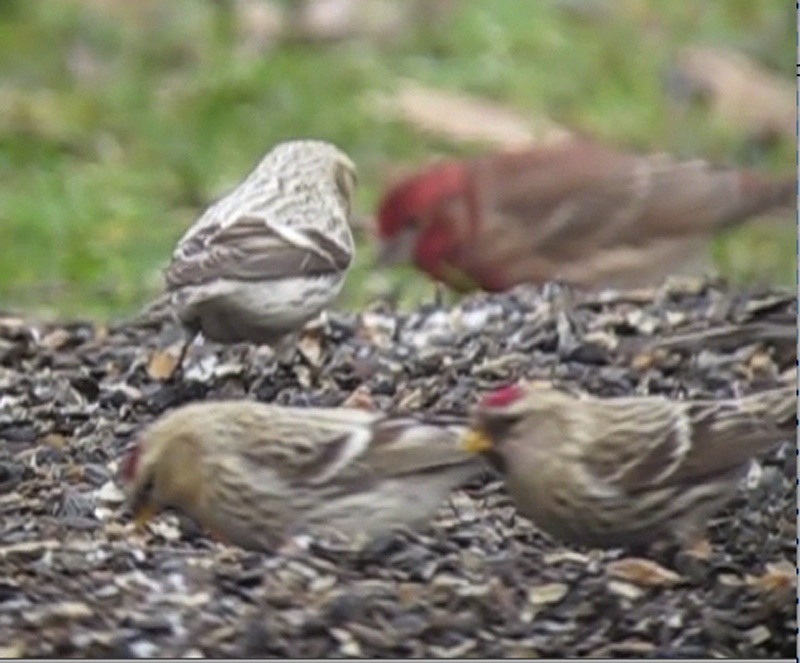
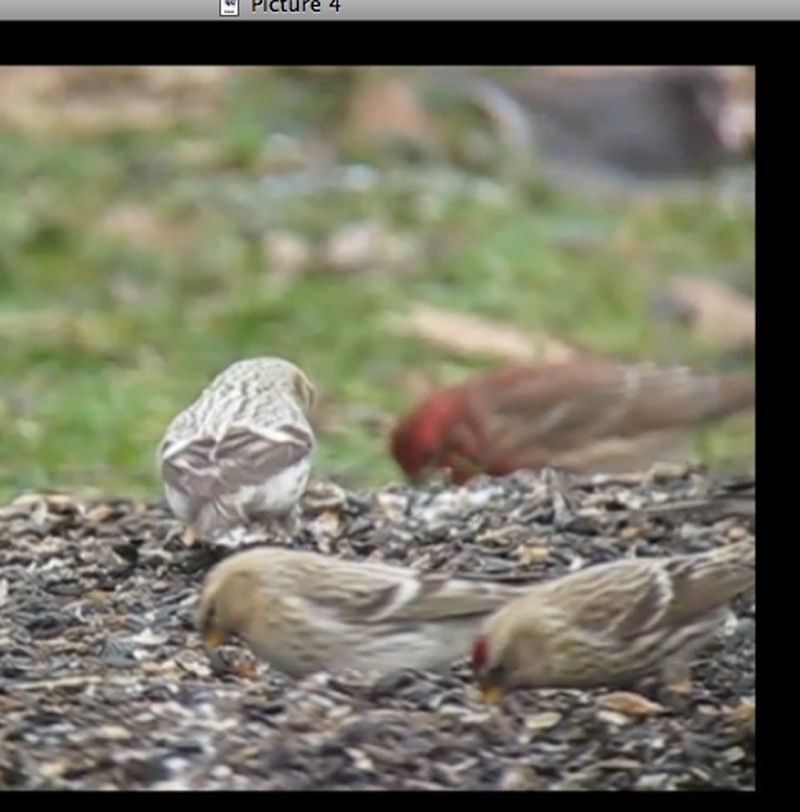


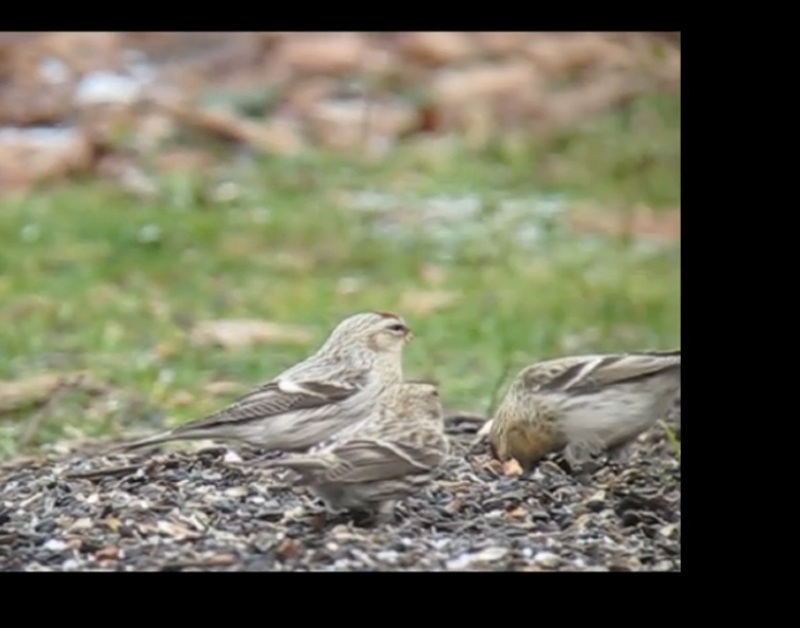
We only introduced four subspecies of Common and Hoary redpoll… but there’s another we didn’t mention, the islandica species of the Common Redpoll. In eBird ssp. islandica is lumped in with rostrata as islandica/rostrata. Is the bird from photos 31-36 perhaps of this subspecies? Well-known redpoll expert, Andy Stoddart examined these pics and said the following:
“is long-bodied, rather plain and buffy around the face, a strange grey-fawn colour above and well-streaked on the rear flanks but on a clean white background. It seems to share characters of both ‘Hoary’ and ‘Common’ type redpolls. I agree that it doesn’t look like ssp. flammea, either in terms of size or plumage….. so what is it?
If it really is as large as it looks (more on this below) I think there are only two real possibilities – a pale ssp. ‘islandica’ of the well-streaked ‘mid-range’ type or (if such things exist at all) a hornemanni/rostrata hybrid. Of course some islandica may look as they do because of gene flow between a dark and a pale form so the two scenarios are not that different. I’ve not heard of any confirmed hornemanni/rostrata hybrids, though there is a mention in the literature of a copulating mixed pair in Greenland. Unfortunately the outcome of this particular mating isn’t known as both birds were shot!
So, on balance a ‘mid-range’ pale Iceland Redpoll seems a plausible suggestion (unless the bird isn’t really as big as is suggested) and I might tentatively identify it as one in northern Scotland. Unfortunately you’re in the US! However, given that redpolls seem capable of turning up anywhere (eg a ssp. flammea from Michigan to Siberia) I guess it’s not impossible”
Is this a first record of ssp. islandica in North America? I had sent this on for review because I thought it matched the subspecies well.
Near the end of February a banding crew including Mason and Taylor came to the house, and we caught a few Hoary Redpolls. At least one of them was thought to be a ssp. hornemanni (matching one of the above birds), but when measured the wing chord was near the low end for this subspecies and the high end of ssp. exilipes (75mm). There is a small overlap between the two subspecies. Mason and Taylor (2015) published a paper using these birds and others, and then proposed that the two species be lumped. There is clearly gene flow, and therefore hybridization…..and it was a reason for the proposal of lumping them…..but it didn’t pass for now at least. “The physical differences among redpolls are associated with patterns in their RNA, not necessarily their DNA” according to the 2015 paper.” In the 2015 Mason and Taylor paper, less than 1% of the genome was used and no definitive hornemanni individuals were used from Greenland. Other studies point to strong assortative mating between the two redpolls species in that they know how to tell each other apart, but more study is warranted.
At least 7-8 different Hoary Redpolls visited my feeders during the 3-4 week period. Additionally, there were at least 3 different Greater Common Redpolls in my yard along with a “presumed” different ssp. hornemanni bird that we did not catch (see above Photos 28-29). At the very least there were 3 good subspecies that visited the yard, with perhaps 5 different subspecies present. One can separate the vast majority of redpolls without measurements, but when possible, birds should be measured and matched to plumage characteristics, especially in cases like this, where subspecies measurements (like the Hornemann’s and exilipes Hoary redpoll) can overlap.
Here’s a ranking of the difficulty of identification for Hoary Redpolls from easiest to toughest:
1. Adult Male
2. Adult Female
3. Immature Male
4. Immature Female (overlap in traits with Common Redpoll females can be common)
When ranking traits, I often will lump them as best, secondary and tertiary in importance:
Best (you could list these three as 1a, 1b and 1c. If you have all three of these traits, you have a Hoary Redpoll). Focus on these three and take lots of photos of them. If you do this you will have very likely taken enough photos to get the other traits as well.
- Clean no streaked undertail coverts
- Clean white rump
- Frostier back (especially before late winter and spring)
Secondary
- Short stubby bill giving a steep forehead appearance….but it’s mainly only applicable to females because there’s overlap in males
- Wispy and/or thinning flank streaking, but immature females can be pretty streaky on flanks…….and on undertail too.
Tertiary
- Ochre or buffy wash to face which seems fairly common in females
- Pale pink in male Hoaries to reddish to Commons. A note of caution, Hoaries can gain in redness and how extensive the red is from fall to spring. Hoaries will also get browner-backed looking due to faether wear as spring approaches.
- Thicker bull-necked appearance (even much more so noticeable in Hornemann’s Hoary Redpoll).
- Widening and whitening of wing bar
- Smaller size of poll
The cautionary tale in all this though, is that redpoll identification can be hard. Some immature female ssp. exilipes Hoary Redpolls can be quite tricky — intermediate individuals should not just be classified as “pale Common Redpolls” because they don’t fit a “classic Hoary look”. If the photos don’t capture all the traits well, and the ID is inconclusive when considering the overlap in look between immature females of the two species, then the individual is often best left as redpoll sp.. In short though, it was a great winter where I continued my lifelong on-going passion and education for redpolls and redpoll identification. This year is looking like it’s going to be a great year for Common and Hoary Redpolls in the southern part of their range…..and with that, I wish all a winter of Happy Redpolling!
FiRN is committed to researching and protecting these birds and other threatened finch species as well. We’ve included a link to donate below, and hope you’ll help support our efforts.
I’d like to dedicate this redpoll blog to Martin Garner, who loved talking redpolls, but unfortunately passed away a few years ago at way too young of an age!
For more Redpoll Identification help see these linked resources:
http://www.jeaniron.ca/2015/redpollsRP.htm

